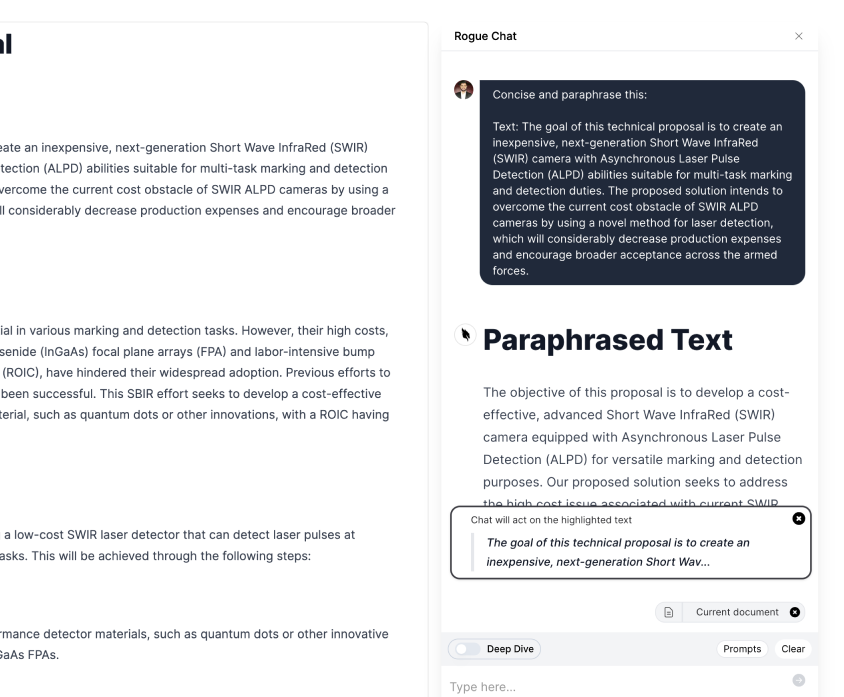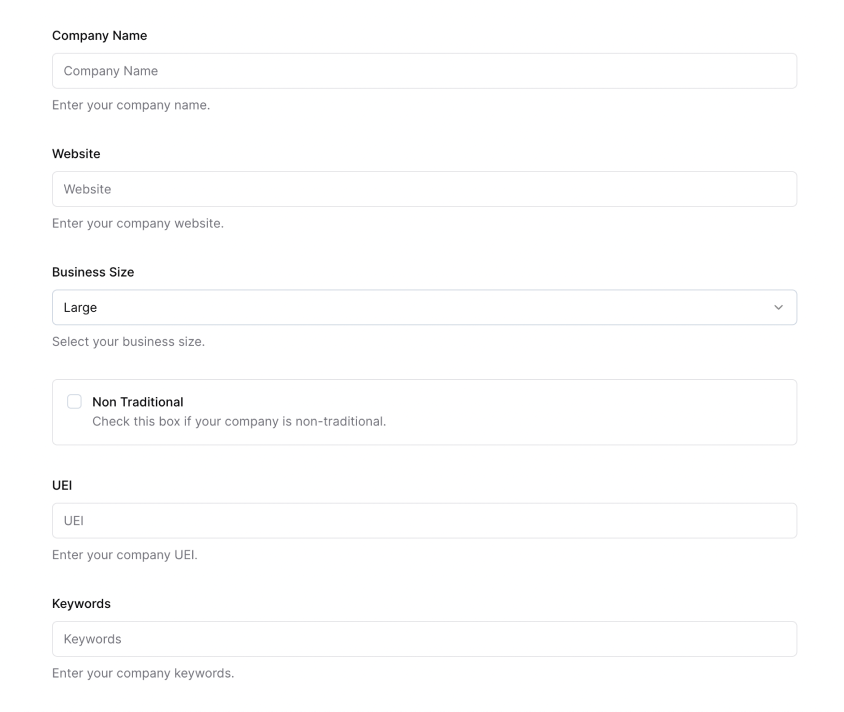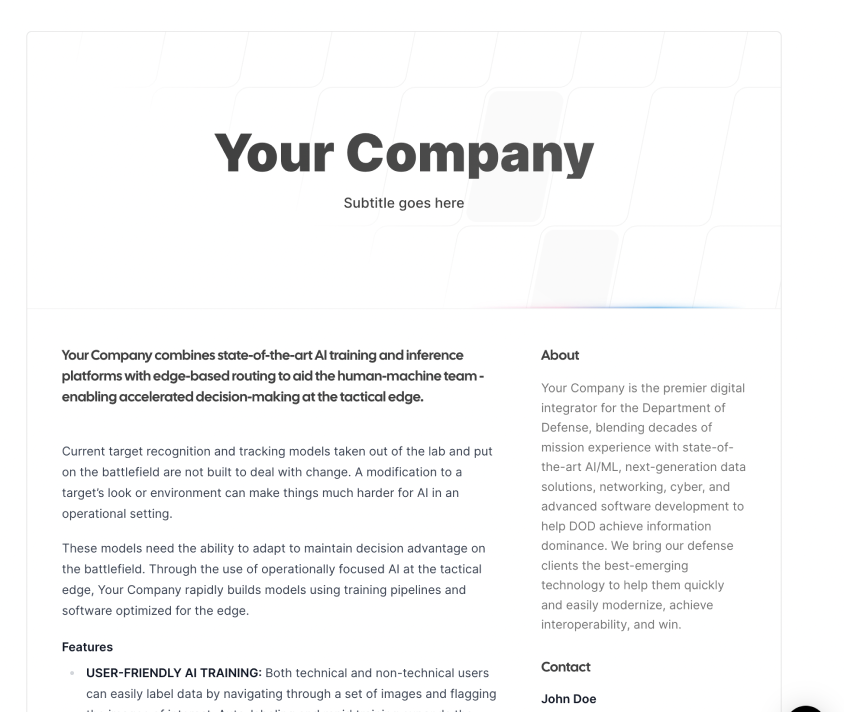
Why AI Will Save GovCon
Could AI be the answer to the declining number of Small Business participants in the federal market?
Table of contents
Marc Andreessen of Andressen Horowitz (as if he needs an introduction) recently wrote an excellent and well-reasoned Blog Post entitled “Why AI Will Save the World”. If you have yet to read it you should do it right after reading this. In his article he made a number of great observations about AI, among them that government regulators should look suspiciously at the AI companies who are currently begging for regulation. Another thing that Marc said on a recent podcast is that the adoption arc of AI is unlike those of the computer and the internet, the last two massive step changes in human productivity. As we look back on the technological evolution of our society, we can observe a common pattern in how new technologies are adopted. Government and large corporations are usually the early adopters, and slowly these technologies trickle down to consumers. The computer revolution and the progression of the world wide web are two prime examples of this trend. However, when it comes to Artificial Intelligence (AI), this familiar pattern is being turned on its head. The title of this blog pulls that thesis through to the Government Contracting industry where small business participants are declining precipitously. Our thesis dovetails on Marc’s and proposes that AI has the potential to also save GovCon and correct the market consolidation that is currently swallowing GovCon.
The Computer Revolution
The computer revolution, which radically transformed not only the technological landscape but also the way people live, work, and communicate, has a fascinating history. This transformation began with the government and large corporations, transitioned to smaller companies, and eventually reached the consumers.
The computer revolution essentially began during the World War II era. Governments, particularly the United States and British governments, were instrumental in the development of the first generation of computers. The first fully functional digital computer, the Electronic Numerical Integrator and Computer (ENIAC), was developed under the auspices of the U.S. Army during the World War II. The primary purpose of these machines was to calculate artillery firing tables and crack complex war codes. Following the war, large corporations began to see the potential of these computing machines. IBM, a significant player in the technology industry, started investing heavily in computer technology in the 1950s. This led to the development of mainframe computers, which were large, incredibly expensive machines that were primarily used by large businesses and government institutions. These machines transformed data processing and record-keeping, significantly increasing efficiency.
As the 1970s approached, smaller companies started entering the market. Firms such as Apple and Microsoft, which began in garages and basements, were instrumental in the miniaturization and democratization of computers. The introduction of microprocessors made computers smaller, cheaper, and accessible to a wider audience. This was the era of the personal computer, a term popularized by IBM's PC. The final stage in the computer revolution was the widespread adoption of computers by consumers. Advances in technology made computers increasingly affordable and user-friendly, leading to a surge in consumer demand. The introduction of graphical user interfaces, the mouse, and the internet made computers accessible to the general public. The 1990s and early 2000s saw an explosion of personal computers in homes, fundamentally changing the way people communicate, gather information, and entertain themselves.
The Evolution of the Internet
The internet followed a similar trajectory to the computer revolution. It started as a small network connecting a few universities, expanded to a military network, became a vital tool for large corporations, and finally evolved into the World Wide Web that connects nearly every electronic device today. The internet's story began in the late 1960s with the creation of the Advanced Research Projects Agency Network (ARPANET), a project funded by the U.S. Department of Defense. ARPANET initially connected four universities in the United States, allowing researchers to use mainframes at different locations. The primary purpose was to share resources and communicate more efficiently.
The potential of ARPANET was quickly recognized by the military, leading to its expansion. It became a large military network used for secure communication during the Cold War. The emphasis was on creating a network that could withstand potential attacks and still function. This led to the development of packet switching and protocols like TCP/IP, which are fundamental to today's internet. By the 1980s, the internet's infrastructure was increasingly used by large corporations. They utilized this technology for internal communication and data exchange. The introduction of the Domain Name System (DNS) made the internet more navigable, thereby enhancing its usability for corporations and institutions.
The final stage in the evolution of the internet was the creation of the World Wide Web in the 1990s. Developed by Tim Berners-Lee, the World Wide Web made the internet accessible to the general public. It became a global system of interconnected documents and other resources, linked by hyperlinks and URLs. This marked the beginning of the internet age, as we know it today, where nearly every electronic device is connected, providing instant access to information, communication tools, and services. Just as with the computer revolution, the internet has continuously evolved, moving from a small network of universities to a vital military tool, a resource for large corporations, and finally a worldwide network connecting billions of devices.
AI Adoption: An Unfamiliar Arc
Unlike its predecessors, AI has seen a different adoption trajectory. Starting as a government-funded technology, one would have expected it to follow the usual trickle-down path. However, in an unexpected twist, the adoption of AI technologies has taken a unique course. Consumers and small businesses are leading the adoption of AI in their daily lives and work.
The accessibility and affordability of AI technologies have improved significantly over time, particularly in the last 10 years. In earlier stages of development, AI systems were highly complex and expensive solutions limited to government agencies or well-established companies with substantial resources. Early AI systems involved hand-coded connections between data and rule-based logic trees. Thus, early applications like the guidance system for Tomahawk Cruise Missiles and the TurboTax automatic tax analysis required immense amounts of data and programming to achieve. Recent advancements in technology, most notably ChatGPT, Bing Search, Bard Search DALL-E, and Midjourney have led to more user-friendly interfaces and cost-effective options that cater specifically to the needs of consumers and small businesses. Additionally, the democratization of information through digital platforms has empowered individuals and smaller organizations with valuable knowledge about AI's potential applications across various industries. Online resources like Huggingface and GitHub provide open-source versions of cutting edge models, educational resources, and supportive communities provide accessible avenues for learning about and practice AI implementation without requiring extensive financial investments or specialized expertise.
Furthermore, consumer demand for personalized experiences coupled with growing competition among businesses has fueled the need for innovative solutions powered by artificial intelligence. Recognizing this opportunity for differentiation and efficiency gains afforded by leveraging AI capabilities such as machine learning algorithms or natural language processing systems; many nimble startups or agile entrepreneurs are implementing AI wherever possible. The rapid advancement of AI over the past decade has been nothing short of remarkable, revolutionizing various industries and capturing the imagination of consumers worldwide. From cutting-edge technologies like ChatGPT that can engage in human-like conversations to intelligent recommendation systems and highly efficient automation processes, AI has demonstrated its immense potential in enhancing productivity and transforming business operations.
While individuals have eagerly embraced these AI-driven innovations in their personal lives, it seems that government entities and large corporations are lagging behind when it comes to adopting these transformative technologies. Their progress appears sluggish compared to the swift pace at which AI is being integrated into everyday consumer experiences. This disparity between public sector organizations and private enterprises regarding AI adoption raises questions about the unique challenges faced by governmental bodies and large businesses. Unlike consumers who can readily adopt new technologies based on personal preferences or needs, governments must navigate a complex landscape of regulations, budget constraints, ethical considerations, and accountability requirements before embracing emerging technologies like AI.
Government agencies often operate within established frameworks designed to ensure transparency, fairness, and equitable outcomes for citizens. Consequently, any implementation of AI technology must align with these principles while also addressing concerns related to privacy protection, bias mitigation, data security measures as well as recognizing potential social implications. The need for thorough evaluation processes further contributes to the perceived slow pace as multiple stakeholders collaborate closely during decision-making stages.
Similarly burdened by intricate hierarchies and bureaucratic structures that prioritize stability over agility—large businesses face similar hurdles when it comes to implementing advanced AI solutions effectively across their operations. The realm of government contracting has witnessed a notable surge in the adoption of AI technologies, particularly among small businesses, entrepreneurs, and solopreneurs. Recognizing the immense potential for productivity gains that AI offers, these forward-thinking entities have been quick to embrace and experiment with various applications of AI within their operations.
AI in Government Contracting
In the world of government contracting, we see this trend playing out vividly. Our experience with UseRogue, an AI-powered tool for proposal writers, is a telling example. Freelance proposal writers quickly grasp the immense value that UseRogue brings to the table and the promise to increase their linear writing capacity. Likewise, compelled by a need to level the playing field against larger competitors, small businesses enthusiastically adopt AI solutions like UseRogue. They quickly realize the promise inherent in the ability to streamline processes and leverage the power of AI to reduce their cost and time investments. The ability to write more proposals faster enables a step change in their completion for government contracts.
However, larger companies and government entities react differently when it comes to the adoption of AI in government contracting. While smaller organizations may embrace AI with enthusiasm, these larger entities tend to approach the subject with a more cautious mindset. One common response from these larger companies and government agencies is a series of queries regarding the legal implications surrounding AI implementation. They seek clarity on issues such as data privacy, security, liability, and potential ethical concerns that may arise from using AI technologies.
Another frequent request from these stakeholders is for on-premises deployment of AI systems. Unlike smaller businesses that might readily adopt cloud-based solutions or third-party platforms, larger enterprises often prefer having full control over their data storage and processing capabilities by deploying AI infrastructure within their own premises. This allows them to maintain strict oversight over sensitive information while leveraging the benefits of advanced analytics offered by AI technology. Similarly, government responses towards integrating AI in their contracting processes revolve around regulatory compliance with established standards like FedRamp (Federal Risk and Authorization Management Program) or IL5 (Impact Level 5). Adhering to such guidelines ensures that government agencies meet robust cybersecurity requirements when utilizing commercial cloud services or implementing advanced technologies like machine learning algorithms.
So What?
With computers and the internet, the government and large corporations shaped the arc of adoption; they defined how the structures were built, what the initial use-cases would be, and imposed some of that definition on the consumer. With AI though it seems that consumers and small businesses are defining the arc, evident in that large corporations and government organizations are trying to adopt chat-based interfaces for any number of use-cases.
In the realm of GovCon, this means that small companies and individual entrepreneurs are going to grow a competitive edge in the near-term while large companies and the government adapt to the new normal and determine how they with it. This time may not last more than 12-24 months, but the edge that small and solo companies can establish and grow from is an immense promise. One major cause of small business decline is selling out early and avoiding the challenges that come with transitioning from a “small business” to a ”large business” in their particular NAICS codes. This is probably an threshold that is underapreachitated by the government as a latent cause of small business shrinkage. Consider, you are small business that is growing and thriving, approaching the $30-50M revenue mark, which is a fairly large company. Once you cross that threshold you are competing against companies that have $30-50B in revenue. The competitive capacity of your competitors changes by orders of magnitude. If you own this thriving small company staring down the prospect of going from growing in one pool to dying in another pool, what would you do? So, many small companies shoot for the “200 headcount and sell” target, and many large companies, or increasingly private equity groups are willing to purchase their customers and contracts. The net result though is the clear precipitous decline of small business headcount. In a vicious cycle, the smaller number of small businesses leads more contracts to be award to the small companies that are left, which in turn grow and are bought out and exit the market.
The advent of AI and the outsized capacity it provides will make it easier for small companies to make the leap from small to large size standards. If a forward-leaning small company can bolt-on 10x proposal writing capacity by spending less than the cost of another proposal writer, then the prospect of competing against a companies 100x your size is a little less daunting. Further, companies that really adopt AI and integrate it into their processes and do so over the next 12-24 months as large competitors are still wrestling with their internal restrictions then the added productivity gains will make them not only competitive but dominant. This is how AI will sav GovCon, by giving smaller businesses the tools to stay in the game and win rather than selling out and shrinking the market.
Sign up for Rogue today!
Get started with Rogue and experience the best proposal writing tool in the industry.



